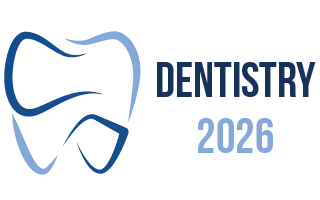3rd European Conference on
Dentistry and Oral Health
May 20-21, 2026 | Barcelona, Spain

Address: Avinguda Del Maresme 78 Ronda De Dalt Exit 15, 08940 Comellà de Llobregat, Barcelona, Spain
Dentistry 2026

Howard University, USA
Abstract:
Introduction: Dental care is integral to general health but
is often isolated from the healthcare system and not discussed as part of
overall health. The barriers to accessing needed dental care vary among
socioeconomic and demographic groups. This study examined the disparities in
dental care access and identified the socioeconomic and demographic factors
associated with dental health needs among United States women. Methods: Using data from the 2017-2020 National Health
and Nutrition Examination Surveys (NHANES), we conducted a Chi-square to assess
the differences in the proportions of women who reported not getting their
needed dental care and computed a weighted multivariate logistic regression to
examine the factors associated with access to dental care use, unmet
dental-care need, and reported reasons for unmet need. Results: Race, income, and education played a
significant role in surveyed participants regarding dental care use and unmet
dental care needs. Non-Hispanic Blacks and other minority racial-ethnic groups,
including multi-racial groups, were likelier to have never used dental care
than non-Hispanic Whites. Furthermore, non-Hispanic Whites with less than a
high school education were likelier to have never used dental care than those
with a high school education. Groups more likely to report an unmet need were women
with PIR < 1.00. Moreover, between 1.00 and 1.99 compared to PIR ≥ 2.00 and
women without health insurance compared to those with health insurance. Conclusion: Expanding insurance coverage for dental care
and improving access for women with poor health may improve racial-ethnic and
education-level disparities, specifically in African American women's unmet
dental care needs.Keywords
Barriers to Dental Care, Dental Care, Dental Care
Utilization, Determinants, Unmet Dental Care Need.
Biography:
Fatima M. Mncube-Barnes, Ed.D, MPH, MBA, is an expert in knowledge management, instructional design, and health informatics. With degrees from Harvard, Brown, and other prestigious institutions, she excels in digital library operations, program development, and research informatics. She has led significant process improvements and team-building initiatives, achieving substantial cost savings and advancements in technology integration
